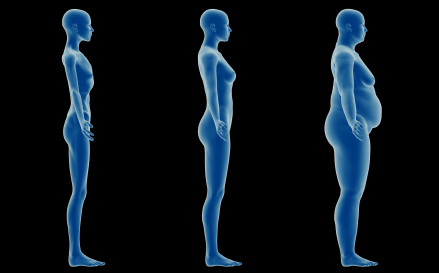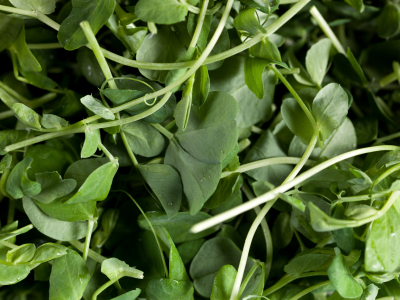Have a heart: low carb, high protein diets
This post will not be very popular amongst some people. And I apologize in advance for that. But I only share information that you may find useful; it’s up to you to decide how to use it.
Lately, there’s been a craze to consume diets high in protein and low in carbs in order to stave off weight and theoretically, certain diseases. But what if a diet out of balance is placing your heart at risk? That’s exactly what researchers are reporting in a large study of almost 44,000 Swedish women that was published this week in the open access British Medical Journal. You can find that study here. Mind you, the researchers caution that the findings don’t address whether or not there are benefits to eating such a diet in the short term. But this is what they do show:
- After examining questionnaires collected over a 15+ year period in this group of relatively young women (ages 30 to 49), they observed 1,270 heart events, including heart disease, stroke, hemorrhage and peripheral disease of the arteries.
- When they scored the diets based on protein or carb intake (with 1 being ‘very high’ and 10, ‘very low) or a mixed diet (with 2 associated with hi carb/lo protein and 20, every low carb and very high protein) they learned that a 1 point decline in intake of carbohydrates or 1 point increase in protein was associated with a 4% increase in heart events.
- Each 2 point increase in low carb/high protein diets (which is equivalent to a 5 gram increase in daily protein intake and a 20 gram decline in daily carbohydrate intake, was linked to a significant 5% increase in heart events. Moreover, these risks did not differ substantially among women whose protein intake primarily derived from animal or plant origin.
The researchers state that “vegetables, fruits, cereals and legumes, which have been found in several studies to be core components of healthy dietary patterns, are important sources of carbohydrates so reduced intake of these food groups is likely to have adverse effects on cardiovascular health,” adding that “several studies have reported that meat consumption or hight intake of protein from animal sources may increase the risk of cardiovascular disease.”
So, what’s the primary message here? Well, like any other study, nothing is definitive. And yet, we know that heart disease risk naturally increases as women age. Should you continue to ascribe to the low-carb/high-protein craze, you may want to pay extra attention to your heart health. You may look like a million bucks and your insulin levels may be fabulous but your heart may be struggling to keep up. Meanwhile? Concentrate on low fat animal proteins and try to stay with the 80-20 rule if you refuse to change your ways, i.e., 80% protein, 20% carbohydrates. Seriously? Have a heart.
Read MoreWhen it comes to exercise, watercress might be the ticket
Watercress and exercise? Who would have thunk that this peppery wonder veg may help to protect against cellular damage that results from high level exercise? Mind you, this initial information comes from a miniscule study of 10 men but it may carry some important information to file for the future.
Watercress is one of the oldest green vegetables known to man and evidently can be traced back to ancient Greece and Persia. But regardless of its history, this salad green is a good source of vitamins C, A, E and K, and is rich in antioxidants, so much so that when ingested, it may help to reduce oxygen free radicals that can cause damage to cells, including those that are generated during extreme, exhaustive exercise (i.e. to the point near fatigue).
In this study, which appears in the British Journal of Nutrition, 10 healthy men in their early 20s ate roughly 3 ounces of fresh watercress in a single sitting for eight weeks. They then got on a treadmill and were tested to exhaustion. Thereafter, they stopped eating watercress for another 8 weeks and repeated the test. Both times, researchers drew blood. In the second half of the study, half the men stopped eating watercress, and half ate the same amount as before with water, rested for two hours and then completed the same exercise test while the other half didn’t eat watercress but did drink water and repeated the test.
The results?
Exercising to exhaustion did induce damage to the men’s DNA. However, eating watercress appeared to reduce the degree and extent of the damage, both in the short and long-term and men who did not eat the watercress in the second half of the study had more DNA damage than those who did. What’s more, watercress did not have an accumulative effect; in fact, eating it just two hours prior to exercise appeared to boost its protective properties.
In a related press release, lead researcher Dr. Mark Fogarty explains that “the increased demand on the body for energy can create a build-up of free radicals which can damage our DNA. What we’ve found is that consuming a relatively small amount of watercress each day can help raise the levels of important antioxidant vitamins which may help protect our bodies, and allow us to enjoy the rewards of keeping fit.”
In fact, watercress is one of the most antioxidant-rich green leafy vegetables available. Its protective effect may be the result of high concentrations of sulfur-containing nutrients known as glucosinolates (which are also found in broccoli, cabbage, brussel sprouts, cauliflower and cabbage) and carotenoids (plant pigments that the body converts to vitamin A that also protect against free radical damage). Watercress is also known to boost the beneficial action of other antioxidants, including beta-carotene, alpha-tocopherol and ascorbic acid.
Clearly, watercress needs to be studied in greater numbers of men and women and in different age groups. In the meantime? Eating watercress can’t hurt and may even help with much needed post-exercise repair.
Read MoreWednesday Bubble: Thin is in – eating disorders in midlife
 Yesterday, my BBFF Amy Zimmerman wrote a shocking piece about a trend among young brides to achieve rapid weight loss via feeding tubes. In it, Amy cites statistics from the The National Association of Anorexia Nervosa and Associated Disorders, Inc. about anorexia and other eating disorders, focusing solely on adolescents and young girls. And while it is indeed true that the majority of eating disorders arise at an early age, there is an entire group that is slipping under the radar: older women.
Yesterday, my BBFF Amy Zimmerman wrote a shocking piece about a trend among young brides to achieve rapid weight loss via feeding tubes. In it, Amy cites statistics from the The National Association of Anorexia Nervosa and Associated Disorders, Inc. about anorexia and other eating disorders, focusing solely on adolescents and young girls. And while it is indeed true that the majority of eating disorders arise at an early age, there is an entire group that is slipping under the radar: older women.
Amy’s post spurred me to do a bit of research and I was not at all pleased by what I learned (and did not learn). In fact, there are a dearth of data on eating disorders in women over the age of 40 and it appears that the problems are underdiagnosed and often unrecognized. Still, experts say that for some of these women, their problem is resurfacing as they age while for others, it is brought on by life events (e.g. death or divorce), menopause (and its related weight gain), empty nest syndrome and even illness. Self-esteem issues, the invisibility syndrome and the mirror all contribute as well.
A February 2012 Harvard Health Publication on the issue quoted Dr. Anne Becker, director of the Eating Disorders Clinical and Research Program at Massachusetts General Hospital as pointing out that society’s values on youth coupled with the incongruence between how women feel and their reflection in the mirror (e.g. “if you think that surface of your skin or contours of your body aren’t supposed to match your chronological age”) is partially to blame. This incongruent belief system can lead to negative body image or a precursor to eating problems where suddenly appearance, food and weight control take center stage. And anecdotal evidence suggests that these issues are starting to emerge in the clinical setting.
If you feel that you are from bulemia (binge and purge), anorexia (severe dietary/caloric restriction) or binge eating disorder (binge without the purge), there is help. Moreover, if you find that you are obsessing unnecessarily and regularly about your body image or weight or appearance, you may be headed down that path. Fortunately, even if the stats are not readily accessible, ample resources ares truly just a click away. The Academy for Eating Disorders features an eating disorder professional finder tool, which allows you to search by location and practice speciality for physical or mental assistance. The National Eating Disorders Association offers in-depth resources, information, support and education to individuals and families. ANDA (National Association of Anorexia Nervosa and Associated Disorders) also provides resources and links.
You may be under the impression that what you are feeling is a result of aging and societal pressure. Or believe that you overcame your issues at an earlier age and are better able to cope now (even though the signs are recognizable). Yet, just as these issues can soar in adolescents and young adult women, they can similarly do so in midlife. Seek assistance; you are worth it.
Read MoreMotivating Women…Part 2: Be Yourself
We’re taking a break from our regular Wednesday Bubble and talking with three amazing women, Shonali Burke, Kami Watson Huyse and Julie Pippert. These women are graciously sharing their stories about the turn that their lives have taken with regard to health and fitness. Change is never easy, but neither is aging. That’s why I have been so intrigued by the upsurge I’m witnessing in the number of women in their 40s who seem to be committed to changing bad habits before those bad habits change them.
Last Thursday, the Centers for Disease Control and Prevention released a report outlining a trend among the medical community to increase its efforts to recommend that adults participate in exercise and other forms of physical activity. Since 2000, there has been a 40% increase in the number of adults who have been advised to incorporate exercise into their routines. Importantly, however, at each time point measured in the National Health Interview Survey, women were much more likely than men to have been advised to exercise. While this aspect of the Survey doesn’t elaborate on these data, studies have shown that gender does influence obesity rates and that worldwide, more women than men are obese. Not only are women challenged to run household and care for children, but many also work outside the home. This doesn’t leave a lot of time for meal planning and even less, for exercise. Nevertheless, both are essential for good health and wellbeing.
A few years ago, my friend, cookbook author Mollie Katzen suggested to me during our interview that even if women do nothing differently, as they age their bodies become less efficient metabolic machines, adding that one of the most consistent things she’s observed amongst her friends is the “oh my god, what happened to my body” moment. The ‘I’m minding my business, doing the same things I’ve always done and all of a sudden, I’ve got this spare tire, I’ve got the fat” epiphany. The answer?
Trial and Error
Health is trial and error. What works for one woman might not be exactly what works for another. We all need to forge our dietary paths and strategies that work for both our individual metabolism and our bodies. And if it isn’t working? Change it up and aim higher. Or differently.
Shonali explains that her trainer introduced her to two dietary strategies: The Primal Blueprint (aka, the Paleo diet, which focuses on balancing insulin levels in your body) and Gary Taubes’ Why We Get Fat‘ (again, focusing on insulin regulation). She says that while “there have been lapses,” I typically eat no grains, legumes or processed foods/foods high in sugar.” What strikes me as the most important thing in Shonali’s incorporation of a new way of eating into her life is that she tries to cook a meal every day consisting of a healthy salad and an entree that is protein-rich but also, she is “careful not to let myself feel hungry; if I am hungry, I eat…I just eat the foods I know are good for me.”
Kami says that while she may eventually go on a specific plan, like Body for Life , she prefers easing “into any dietary restrictions slowly. So far, I am just trying to back off on portions,” she explains, adding that “I have always eaten lots of vegetables and fruits but I am upping that.” Julie is also relying on portion control and is “eating very little meat, mostly fish,” and “as much fresh food as I can instead of processed food.” As a working mom of two and with a husband who has a long commute, Julie says that it can be hard to do regular family dinners but that she worked with a nutritionist who helped her “identify ‘eat this/not that’ convenience type [healthy] foods, such as flash frozen veggies and fruit but not packaged meals.” She adds that she ‘also attends free cooking classes at Williams-Sonoma to get easy and quick recipe ideas.
Set Goals
In Part 1 of this series, we discussed accountability and how answering to another person, e.g. a trainer, can help you get into a groove. However, it’s important that that groove is yours’ and your’s alone. Moreover, setting goals is part of that accountability but rigidity is not the aim; instead, goals need to be fluid and evolutionary.
Julie says that her “initial goal was to lose weight and get out of the overweight category. I wanted to eat right and get active. Once I achieved that, I wanted to work out a long-term health maintenance plan.” She adds that that entails tweaking portions and working on body toning. Kami’s goal is more specific: she wants to lose 10 to 15 pounds (minimum) to improve the pressure on her bad knee. After that, however, she says that “it would be great to reduce my waistline by 2 to 3 inches to get off some of the belly fat, which is, by far, worst for your health.” Shonali also says that her goals had to do with “losing a certain amount of weight and fitting into a particular dress size,” but now, she’s considering aiming even higher and is considering running and possibly training for a 5K.
To thine own self, be true
Guess what? It’s all about you. I’m serious. Don’t believe me?
All three of these women say that the primary outcome of the changes that they’ve made in their lives is that not only do they feel better, but they also feel better about themselves. Wow! Since Shonali has started last August, she has lost almost 20 pounds and 15″, reduced her BMI from 25.3 to 22.4 and lowered her body fat percentage from 31.6% to 24.3%. She’s also come down one dress size. However, here’s the rub: she says that “the numbers are great but what I really love is that I have more energy and stamina. I am much stronger than I used to be; I sleep better, I’m more focused with my work and my confidence has increased greatly.”
Kami’s journey has just begun (or as she describes it “just restarted”) and yet, her primary outcome echoes Shonali’s. “I feel better about myself and that is priceless.”
Julie, too, expresses a similar experience. “I lost 50 lbs initally,” she says, although this is at the low end of the weight range for her size and she’s not been able [rightly so] to maintain that. Still, She is at a healthy weight and at an average BMI. And most importantly, she explains “I have a lot more energy, huge improvements on stress and mood and I look better. That’s led me to dress better, feel better and achieve more.”
The lessons inherent in these outcomes are essential: aging can be bumpy and sometimes, our bodies don’t behave quite as we expect them to. Dress size, body fat, weight loss are simply keys that help to unlock the door to the most important outcome we can achieve: self-love. And when you feel good, that radiates out in unbelievably beautiful, gorgeous ways. I know it sounds cheesy but it’s true. Honestly? Be kind to yourself and to thine own self, be true. Like Kami says, the gift is priceless.
I hope that you’ll stay the course and tune in again on Friday for Part 3.
Read MoreWednesday Bubble: when it comes to chocolate, walk the walk
You know all that dark chocolate you started eating after Monday’s post about chocolate and heart disease? Well, ‘Wednesday’s child is full of woe,’ mainly because overconsumption of high energy food sources, like chocolate, can lead to slow weight gain over time.
Damned if you do and damned if you don’t, right?
Not so fast! I ran across an interesting piece the other day when researching chocolate. And researchers say that while chocolate is one of the most commonly craved foods because it can temporarily enhance moods and may even be considered addictive, exercise may be a way to counter the chocolate craving, especially in the workplace where snacking is used as a tool to counter boredom, fatigue and stress.
In this small study, researchers asked regular chocolate eaters (i.e. those who confessed to eating at least two chocolate bars a day) to abstain from eating chocolate for two days and then randomly participate in the following:
- 15 minutes of exercise (a brisk walk on a treadmill to the point but not exceeding breathlessness) and a low demanding computer task
- 15 minutes of exercise (as above) and a high demanding computer task
- Rest and a low demanding computer task
- Rest and a high demanding computer task
Now, here’s the rub. During the computer tasks, participants were seated next to a bowl of chocolates and informed that they could dig in as they wished (and, the bowl was weighed before and after so that the researchers could accurately determine how much chocolate was eaten). And, despite temptation, the participants who exercised ate half as much chocolate as those who didn’t. Yet, stress didn’t seem to counter the effect of exercise or the temptation to snack since both high and low demanding tasks resulted in pretty much the same level of chocolate consumption.
Although this is a very small study and only mimicked real life conditions, evidently, others have likewise shown that a brisk walk can temper chocolate cravings and that walking for as little as five minutes can counter an urge to snack. This is especially interesting when it comes to addictive foods like chocolate, since the compulsion component of addiction is such a strong driver of unhealthy behaviors.
The next time you’re at work and feel compelled to reach for the chocolate? Take a break and walk around the block. Save the chocolate for relaxing evenings at home. After all, home is where the heart is.
Read More
Newsflash…Before you ‘D’ know the facts. New recommendations from EMAS.
Vitamin D. Lately it’s been touted as the cure-all for all that ails. From bone health and diabetes, to cancer and infections, vitamin D is the go-to supplement. But, do you really need it? And how much should you be taking on a daily basis?
Vitamin D levels are reportedly low in women undergoing menopause and because it is necessary to maintain bone health, there is no question that it’s in great demand by our bodies. This is especially true of fair skinned individuals, women, and people who live at higher altitudes. In fact, research shows that a number of factors can influence how the body synthesizes or produces Vitamin D, including altitude, time of year (e.g. winter) time of day, amount of exposed skin at any given time, skin pigmentation, extensive use of sun protection (i.e. sunscreen, protective clothing, shade) and air pollution). However, the more news that comes out about vitamin D, the more confusion abounds as to its true benefits and how much you should be taking.
Some of that much needed detail is provided in a recent statement issued by the European Menopause and Andropause Society. Rather that put you to sleep with all the details, here a few highlights that sets current knowledge about vitamin D on the correct path:
- Although there have been a ton of studies on vitamin D, linking it to outcomes and risks and benefits in a variety of conditions, evidence for its benefit is strongest in terms of bone/skeletal health.
- Osteoporosis is very common in postmenopausal women leading to increased fracture risk. It appears that adequate levels of vitamin D may help preserve bone structure and contribute to the function of muscles. In studies, women with the lowest vitamin D blood levels were shown to have the highest fracture risk.
- Healthy postmenopausal women can insure that their body’s levels of vitamin D are optimized by exposing skin to the sun, 15 minutes at a time at least three to four times a week during Spring, Summer and Fall. This does not include artificial UV exposure from tanning booths.
- Experts recommend that women supplement sun exposure with no more than 800 to 1,000 IU of vitamin D supplements a day.
- If you are someone at risk for low vitamin D levels, you should see your doctor or health care practitioner for screening to achieve optimal vitamin D levels.
- Women who are obese, have conditions that prevent proper absorption of nutrients (for example, HIV or chronic diarrhea) or have liver or kidney issues need to have tailored vitamin D recommendations.
And the news about over supplementation and toxicity? First of all, you can never get vitamin D toxicity through sunlight (although as we know, too much sun can lead to other problems, like skin cancer). And, toxicity issues have been linked to dosages above 50,000 IU over several months time. Last, women with cancer are likely to convert vitamin D in the body faster, so need lower levels. Again, this calls for monitoring by a health practitioner.
Overall, before you ‘D.’ know the facts. These recommendations are a great start.
Read More










